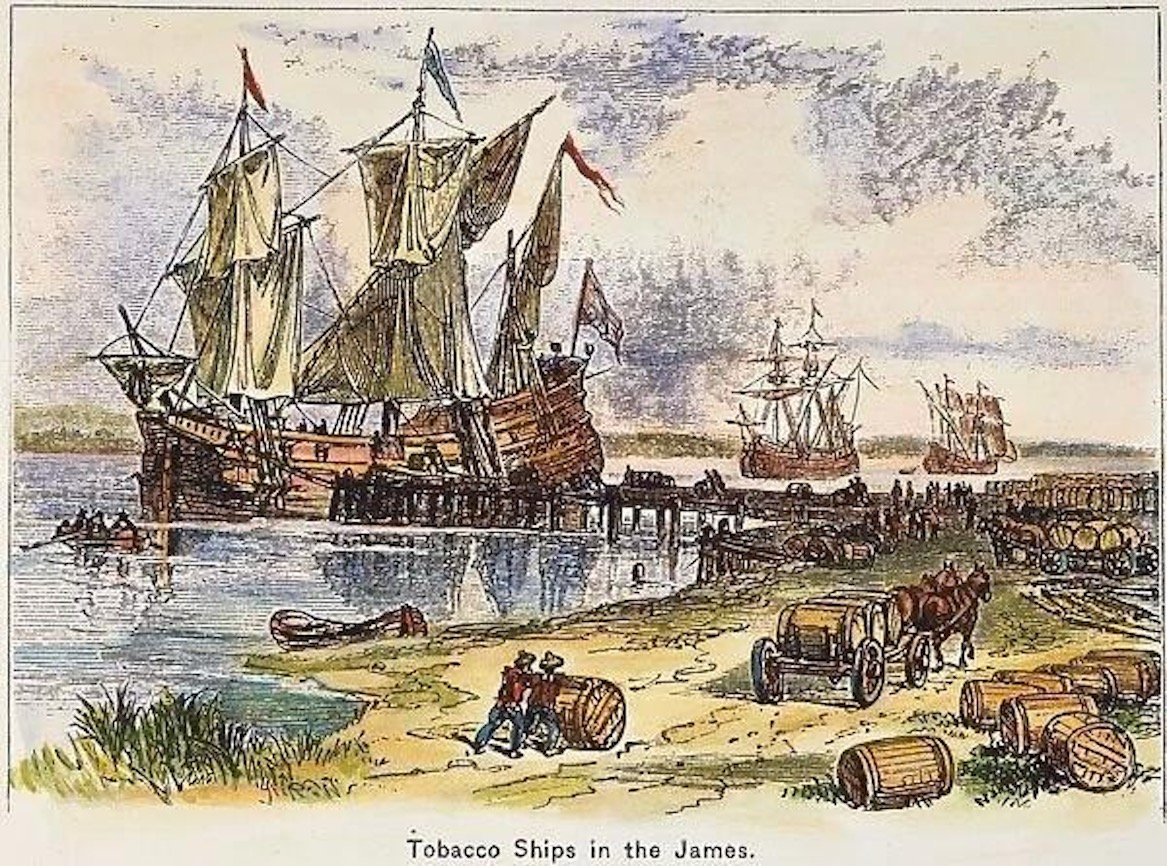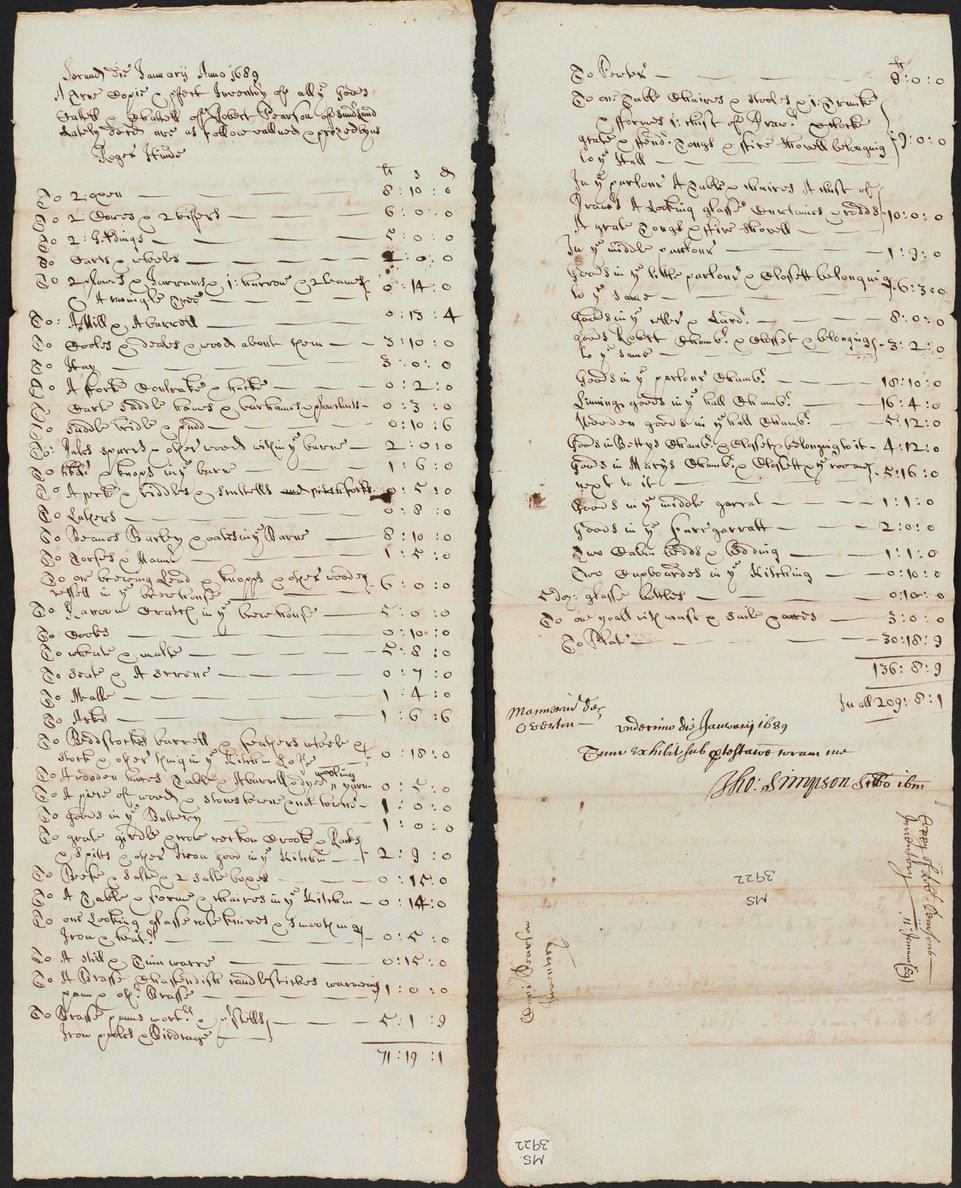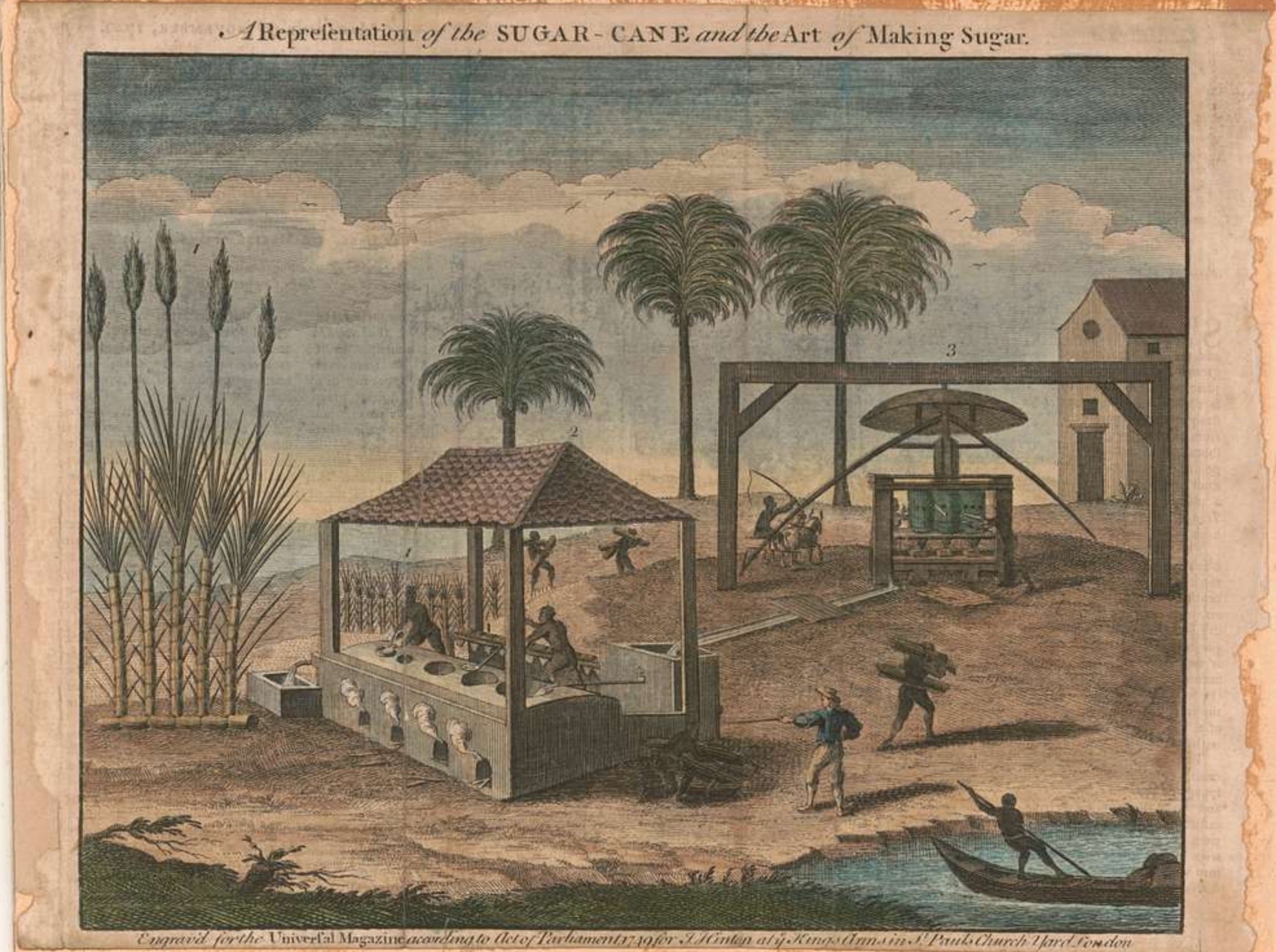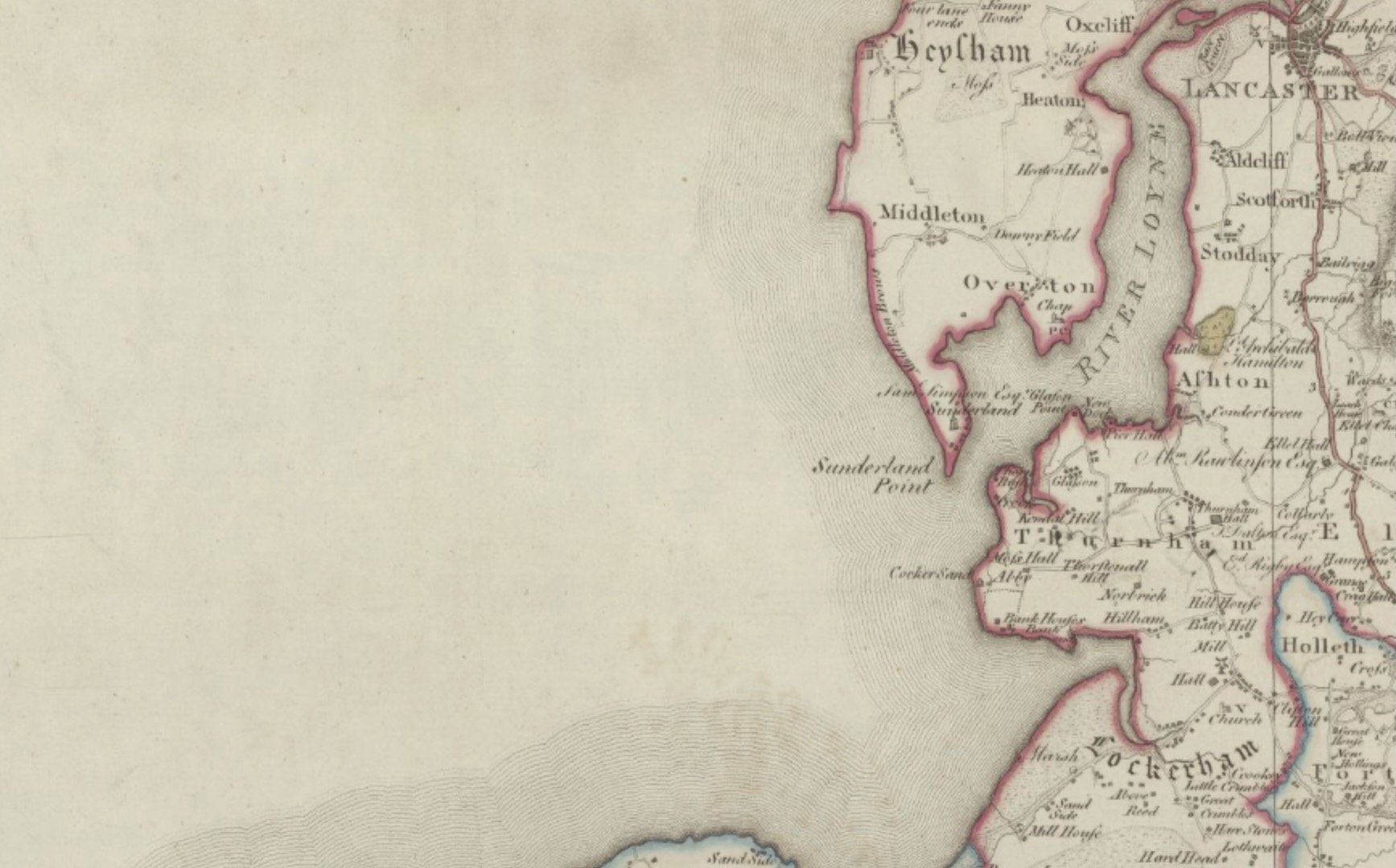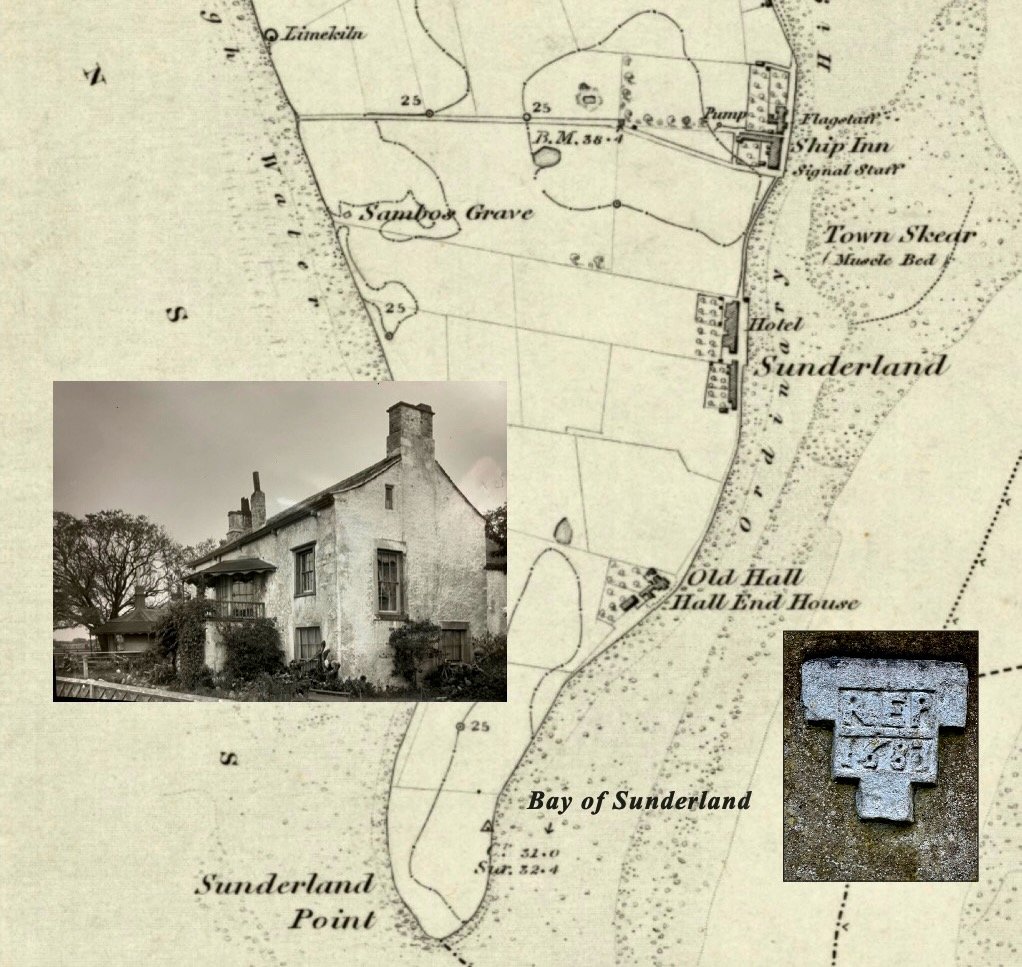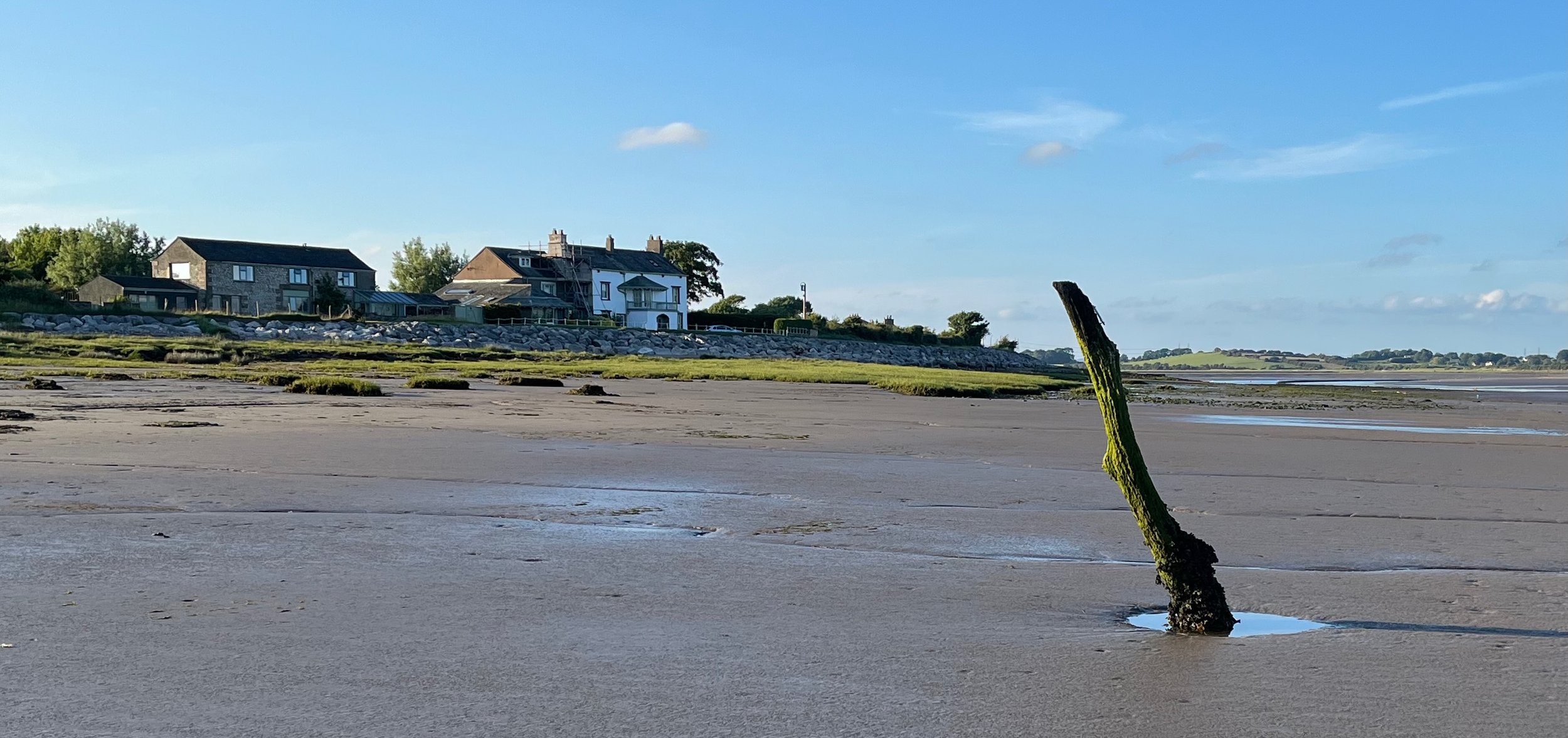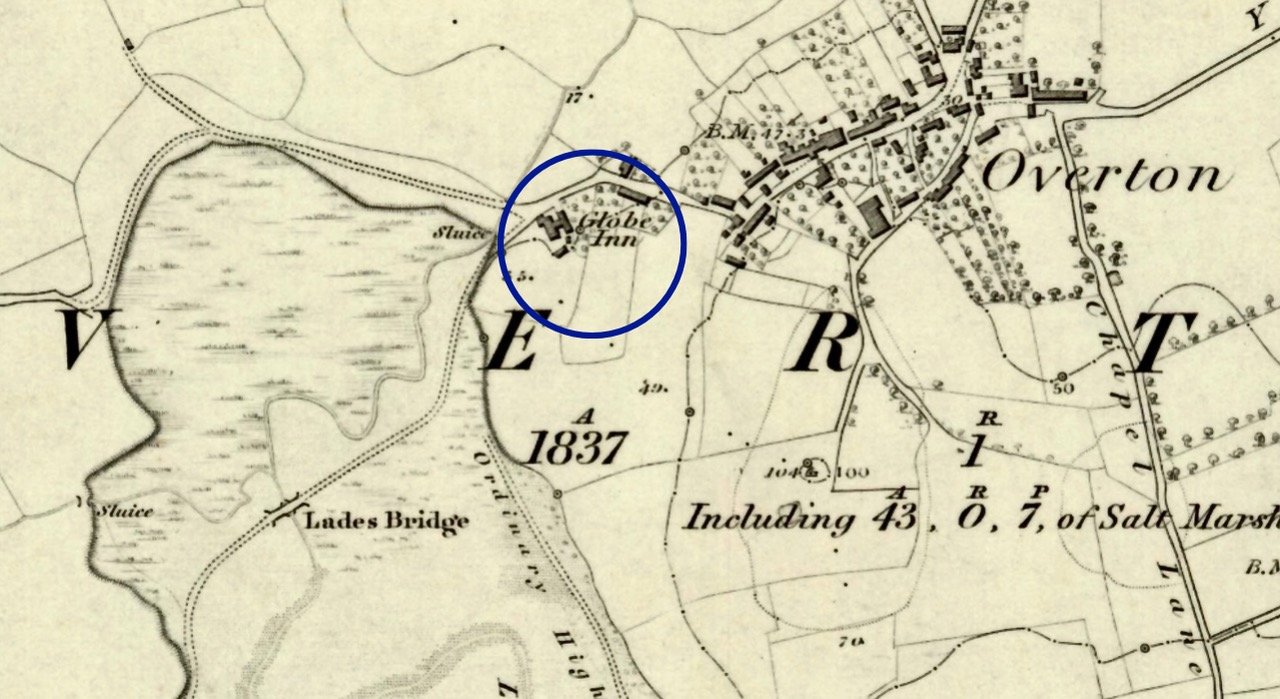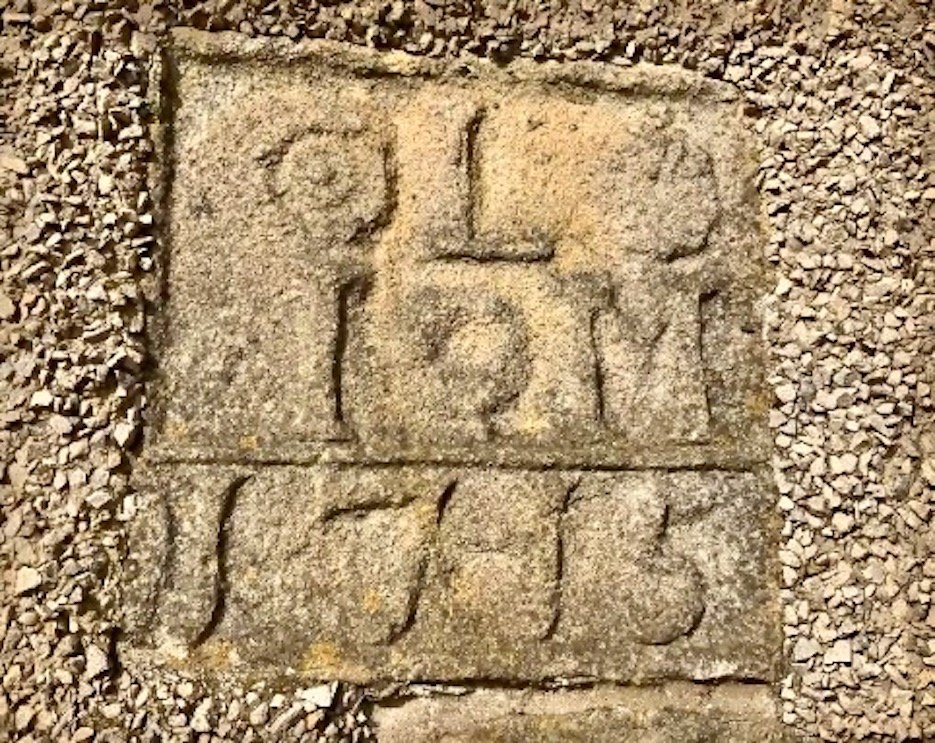The Inventory of Robert Pearson
Origins of Sunderland Point
An idealised later print of loading tobacco onto ships in Virginia in the 1680s: Internet free stock.
Last time we read the Will of Elizabeth Pearson, this week it’s her husband Robert and the inventory taken at the time of his death in 1689. We are grateful to Beth Hampson who found this important document.
The inventory of Robert Pearson: Courtesy Lancashire Archives
Like the Will, the inventory was unreadable until ‘translated’ by Kate Hurst, the list of belongings is surprisingly familiar as it contains pitchforks, feathers, and a birdcage!
Quick catch-up
Robert and Elizabeth Pearson built the Old Hall in 1683, the oldest dated house at Sunderland Point. We don’t know when they were born or married. Robert died at the end of 1688 and Elizabeth died in early 1691. They had five children, Robert, Elizabeth, Mary, Sarah and Rebecca, all underage on Elizabeth’s death.
The Old Hall c1900, a John Walker Photograph: Courtesy Lancaster City Museums.
In the will we found the executors included John Hodgson and Robert Lawson, the two leading Lancaster merchants at the beginning of the plantation trade with North America.
‘Two local Merchants in particular John Hodgson and Robert Lawson showed the way’
Robert’s Will has not been found (but every possible effort was made) but references to it have been discovered confirming that these two were also the executors of his Will.
The relationship between these three men with John Lawson, Robert’s father and his much-underestimated brother Joshua, are central to the beginning story of transatlantic trade from Lancaster. In a little over 10 years, these merchant adventurers instigated the first voyages to Virginia and the West Indies as well as developing support facilities in Lancaster and Sunderland Point.
‘(Lancaster would become) A slipway for globally minded venture entrepreneurs would sail into the buffeting Atlantic winds of challenge and opportunities.’
The irresistible attraction were the glittering profits to made from Virginia Tobacco and Sugar products from the West Indies
Tobacco
Tobacco leaves being processed by enslaved Africans in 1670s Virginia: Internet free stock
By the 1600s Virginia had a fully slave-based, large-scale plantation system, using the forced labour of between two and three thousand (and rising rapidly) transported Africans to cultivate and process tobacco. More enslaved Africans were imported into Virginia than any other state of the Union.
John Hodgson with his brother-in-law achieved the first successful landing in Lancaster of tobacco in 1676. Several voyages followed in partnerships with Robert and Joshua Lawson (and others), in ships such as the Hope of Lancaster, under the command of Robert Pearson.
Essentials required by the colonists such as saddles, cloth, stockings, felt hats, paper, and even coal were shipped out and traded for dried tobacco leaves.
It was tremendously risky with the constant threat of shipwreck, serious diseases, attack from privateers and capture by the Spanish or French.
But the profits could be immense. During the tobacco shortage of 1689 a voyage of John Hodgson’s made a profit of £1500 (approximately £320,000 in today’s value).
Sugar
Sugar Cane processing in the West Indies in the 1660s: Internet free stock
With English slave-based plantation colonies established in Barbados (1625) and Jamaica (1655), imports of raw sugar grew rapidly. Refined sugar was in huge demand for a growing industry of baking and sweet manufacture. It was highly prized and profitable.
The boiling of imported cakes of raw sugar to refine (known then as improving), and the distillation into rum, was performed in a ‘Sugar House’. Spreading quickly after the 1660s Sugar Houses reached most larger towns by 1700.
In c1678 John Hodgson and John Lawson built the first Sugar House in Lancaster.
The Sugar House and Wharf
Docton’s Map of Lancaster in 1684: Courtesy the Historic Society of Lancashire and Cheshire
This map of 1684 was drawn from recovered scraps of hand-drawn sketches of early Lancaster. The Sugar House with bridge over the mill stream has been circled, as has the Wharf, for easy identification
Notice the Sugar House appears to be the fourth largest building in the town.
Notice also the old mediaeval bridge which prevented larger ships from getting to the heart of Lancaster.
One of these original old sketches allows a closer look at St Lenard’s Street and the Sugar House.
Detail from the original drawings: Courtesy Lancashire Archives. Colouring Paul Hatton
(Note, the orientation of this map section is opposite to the full map above)
In blue are two properties owned by John Lawson (and, below those, his bridge over the mill stream). The one on right is the Sugar House, still and warehousing. Next door is John Hodgson’s property in green. They both had property elsewhere in Lancaster, Lawson on Pudding Lane and Hodgson in the town centre, 24 Market Street.
The Wharf
On the map, south of the river is ‘The Green Aire’ and looping around this area of land is the mill stream preventing access to the river.
In 1679 John Lawson was given permission to build a bridge over the mill stream. A year later, permission was granted to build a 20-yard-long wharf. (Freemen of the town to have the use of it on payment of 4d per ton.)
Cargo landed at Sunderland Point could now be transported upriver in ‘lighters’ (small boats) under the old bridge, to then unload at ‘Lawson’s wharf’.
Robert Pearson – Seaman
Robert Pearson was among the first mariners to complete the Atlantic passage from the Lune. His courage, skill and ingenuity have to be admired.
Even before reaching open sea, a crossing over the treacherous, ever shifting and shallow sands of Morecambe Bay was a risky prospect for the most experienced sailors. Although crossings to Ireland (and Isle of Man) were made trading in livestock products, these were infrequent.
Including a short stopover in Ireland for fresh supplies and favourable weather, a return journey to Virginia would take between six and nine months.
Detail from Willian Yates 1786 map of Lancashire: Courtesy National Libraries of Scotland
This early map of 1786 shows the long, slim tip of the Point offering a land-based haven for Atlantic ships in the Lune estuary. William Stout wrote of a great storm in 1720.
‘There was a dreadful storm with strong wind from the west and the river was two feet higher that it was ever known. Great damage was done in Lancaster and even more in the countryside and along the coast. Houses and barns were flooded ruining hay and corn. Several people as well cattle and sheep were drowned.
But the ships at Sunderland rode it out’.
Using the1840s OS map the Old Hall is seen located on the shoulder of the lower peninsula. The date stone from the Old Hall dated 1683 also has R E P, the initials of Robert and Elizabeth Pearson
1843 OS Map edited by Paul Hatton: Courtesy National Libraries of Scotland. Note: ‘The Bay of Sunderland’ is our addition to illustrate the safe haven for ships.
The location of the Hall must have been deliberately chosen as the first convenient safe mooring on the river side of the Point, with soft mud or smooth shingle to rest a low tide and refloat at high water. Posts are still visible on the shore in front of the Hall which may indicate mooring berths.
The largest of the three surviving old mooring posts
Small boats alert to the arrival, perhaps fisherfolk with river knowledge would help unload and transport up the river to Lawson’s Wharf.
Born in Overton, Robert had a brother Thomas who died in 1693, Perhaps another brother, John who died in 1696. Perhaps from a family of boatbuilders, it’s said the Pearson family owned an estate of land where ‘The Globe’ now stands in Overton, and that it was sold to Robert Lawson in 1691.
The location in Overton of the ‘Globe Inn’: 1840s OS map courtesy National Library of Scotland
Robert was a main owner of the ship Hope of Lancaster and its master on the second tobacco voyage commissioned John Hodgson and Robert Lawson to Virginia in 1679.
Searching port records, it’s been confirmed Robert made several further passages to Virginia between 1679 to 1686 each time with Robert Lawson is named as an investor.
This speaks of great seamanship by Robert Pearson, several transatlantic voyages in the same ship were unusual, and it appears the Hope of Lancaster was still afloat when the part he owned - bequeathed to Elizabeth - was sold after her death.
He also arranged passages for volunteers to join the early colonists to replace those lost to disease and extreme hardship. This example has been found:
In 1682 Francis {sic} Robinson of Gosforth, near Ravenglass, spinster, agrees with Robert Pearson of Lancaster, mariner, to serve four years in Virginia according to the custom of the country. (Pearson to pay her passage)’ Andrew White, History of Lancaster.
This would have been a paid business arrangement for Robert, asked to find suitable young women for work, perhaps marriage and children.
The Inventory of Robert Pearson
The Inventory was ‘prized’ by Roger Hinde and will have been used in the allocation of bequests in his will and for taxation.
The ‘translation’ reveals a remarkable and fascinating document. It appears his effects have to be divided into five buildings, a farmhouse, barn, outbuildings and the main house.
The farmhouse contains oxen, cows and horses along with agricultural equipment, in the barn Roger records a quantity of beans, barley and oats. This suggests sizable buildings – perhaps the origin of the building south of the Old Hall (number 23)?
The third building appears to be a brewhouse containing, brewing hops, woods for the fire, wheat and malt. Maybe to prepare fresh beer for ships crews.
The fourth and perhaps smallest is called a buttery but contains Shoes -sewn and not sewn - dyed wooling yarn and assorted iron goods suggesting use for cooking.
The last building is the main house. Roger goes from room to room making his careful list. He writes, the parlour, a middle parlour, a larder, a lower chamber and closet…and a parlour chamber.
Next, he enters goods in what he calls Betty’s chamber and then Mary’s Chamber. Perhaps these are the rooms of Elizabeth and one of her daughters. It has become personal, perhaps Roger was a friend of the family.
The items are recognisable today, a looking glass (mirror), a fire shovel, 5 dozen glass bottles, brass candlesticks, a bedpan – and perhaps best of all – the bird cage.
Roger tots up all of his estimates and concludes the full value of the inventory is £209, 8 shillings and 1 old penny. Approximating to £43,000 in today’s money.
The Hall and the Lawson Family
It’s speculation but it does seem likely that on the deaths of Pearson family members and the purchase of Pearson property by Robert Lawson, ownership of the Old Hall passed into Lawson hands.
It is almost certain Joshua was living in the Hall when William Stout the Lancaster tradesman came to stay in 1698 when they prepared their new ship ‘Imployment’ for a voyage to Virginia.
Joshua appears in merchant lists investing in the plantation trade often as his brother Robert. He was a committed Quaker and for a time a member of Lancaster’s Common Town Council. He was also an experienced mariner. It’s possible he replaced Robert Pearson as the ‘master of the ships’ at the Point
Joshua built the ‘Large House’ in 1715 (where the Reading Room is housed). Perhaps he moved out of the Hall and his son, also named Robert Lawson who married Mercy Moss in March 1716, moved in (or was already there).
But that’s another tangled story.
The ‘Large House’ date stone by the door to the Reading Room on Second Terrace, the ‘I’ represents Joshua and ‘M’ for Mary, his wife.
Thanks again to Beth Hampson for discovering the new material and Kate Hurst for the translation. Also thanks to Paul Hatton for the illustrations on maps.
